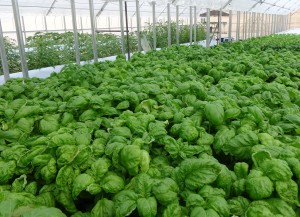Co nsumers flock to farmer’s markets and roadside stands seeking local food.
nsumers flock to farmer’s markets and roadside stands seeking local food.
Grocery store chains, large and small, are seeking locally grown food to meet the demand.
Institutions are mandating that buyers seek locally grown food.
The demand is there.
The problem: In most climates and areas, it is not possible to grow enough food locally to meet this demand.
The solution: Aquaponics and controlled environment agriculture.
Rising fuel costs, new instances of food safety issues related to industrial large-scale food processing and transportation and the demand for better quality food has catapulted the local food movement into the national spotlight.
Aquaponics is the perfect answer to provide local fresh vegetables and fish to a community. With an aquaponics business, sales can be direct to the consumer at a farmer’s market or roadside stand, they can be wholesale to grocery stores, restaurants or institutions like schools, hos pitals, prisons and corporate headquarters (many of which have mandates for local food purchases).
pitals, prisons and corporate headquarters (many of which have mandates for local food purchases).
Local food systems build community by providing a connection between the consumer and the farmer; by increasing availability of more nutritious food and by enhancing local economic development. Aquaponics can be the cornerstone to a local food system.
Water shortages, lack of land to farm and increased transportation costs are all to blame for the rising cost of fresh food. And, what does end up on grocery stores shelves is often poor quality because it was grown in one country and transported thousands of miles to your grocery store.
An aquaponics business can be located in an urban area, the suburbs or a rural area, serving a local food niche. Most aquaponic growers sell everything they grow within an hour’s drive.
